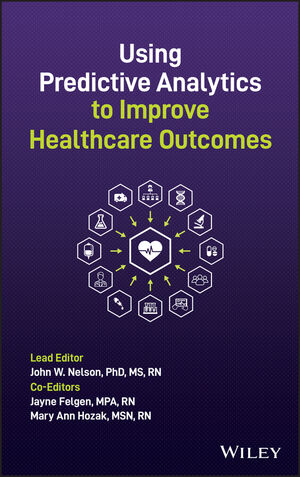how-to-improve-healthcare-using-predictive-analytics
August 19, 2021
When it comes to healthcare, we typically use big data, machine learning, and artificial intelligence to reveal empirical patterns and relationships that help us make sense of this increasingly complex field. But beyond this connect-the-dots data, there’s a more pressing issue at hand: How can we prevent life-threatening mistakes or miscalculations in healthcare before they happen?
“The best day you will ever have at work is the day you figure out how to save your organization a few million dollars while preventing life-threatening complications for 50 patients and their loved ones.”
Currently, hospitals use hindsight-based analytics, such as case studies, root cause analyses, and regression analyses, to evaluate outcomes related to common occurrences like falls and infections. The “retrospective data” helps employees understand why these outcomes occurred, and once identified, informs action plans for improving outcomes.
But this type of data is shortsighted. It doesn’t provide people with instantly recognizable information, nor does it take current or future risk into consideration. Furthermore, healthcare organizations typically stop short of informing prospective management of the data, which would allow for a more meaningful, holistic view of real-life trends and present work conditions.
Predictive analytics can be used to improve outcomes in healthcare for both patients and providers by creating a story based on data that is interesting, relatable, and actionable. Since no two organizations are the same—and no organization remains stagnant over time—you must create a model that accurately captures the people, context, and nuance of your specific organization today. Once a model is established, you can then use data to examine it empirically.
Using Predictive Analytics to Improve Healthcare Outcomes delivers a 16-step process that outlines how to use predictive analytics and other mathematical methodologies to save money and improve healthcare operations. Here are the first four steps to building your model:
Step 1: Identify the Variable of Interest
The “variable of interest” is the problem or issue specific to your team. What problem or area for improvement is of particular interest to you? The answer to this question is the focal point of the story you will eventually tell using data.
Step 2: Identify the Things That Relate to the Variable of Interest
With your team, brainstorm anything that is related to the outcome you wish to improve. For example, you might want to examine anything that could predict, precede, or contribute to a fall (e.g., a wet floor, patients taking heart medication that could affect their balance). Designate one team member to take notes as everyone shares their ideas and personal experiences.
Step 3: Organize the Predictor Variables by Similarity to Form a Structural Model
Organize your list of predictor variables into groups by separating them into columns or writing them down on separate pieces of paper. Some categorical ideas include “patient-related” and “staff-related” variables.
Step 4: Rank Predictor Variables Based on How Directly They Appear to Relate to the Variable of Interest
These variables are your “most influential variables” that intimately connect to the clinical experience of your team and what their personal hunches are regarding the relevance of each predictor variable. Once you’ve ranked the predictor variables within each contract, you will rank each overall construct based on how the entire grouping of predictor variables appears to relate to your variable of interest.
Want to learn more about the positive effects predictive analytics has on healthcare? You can read about the remaining twelve steps in the data analytics model creation process in Using Predictive Analytics to Improve Healthcare Outcomes, edited by John W. Nelson, Jayne Felgen, and Mary Ann Hozak.












